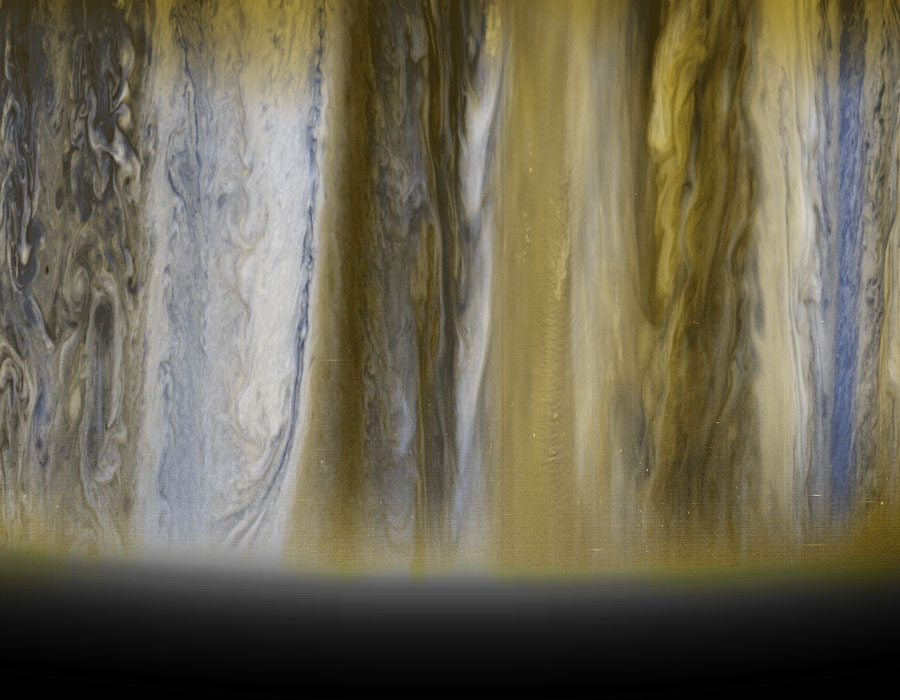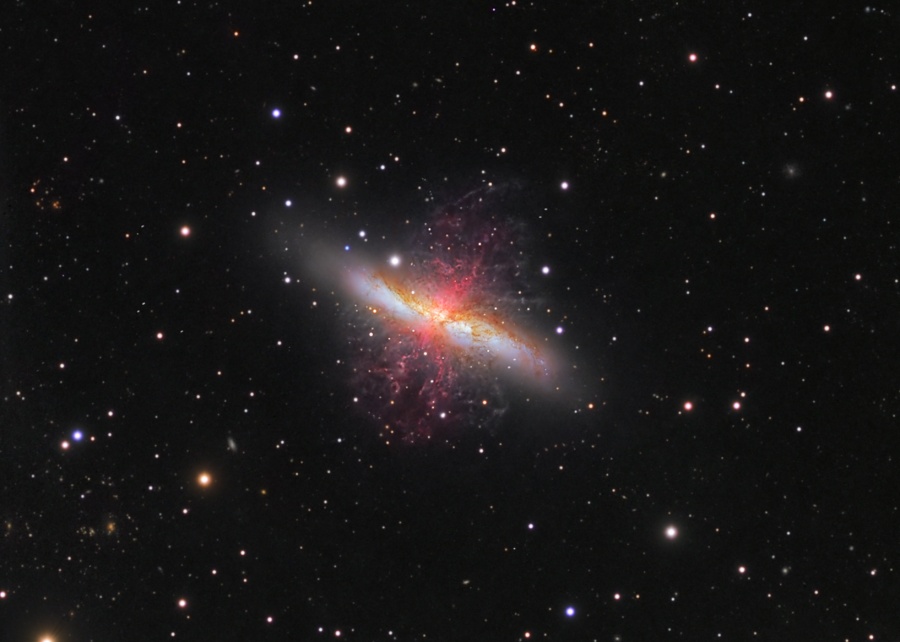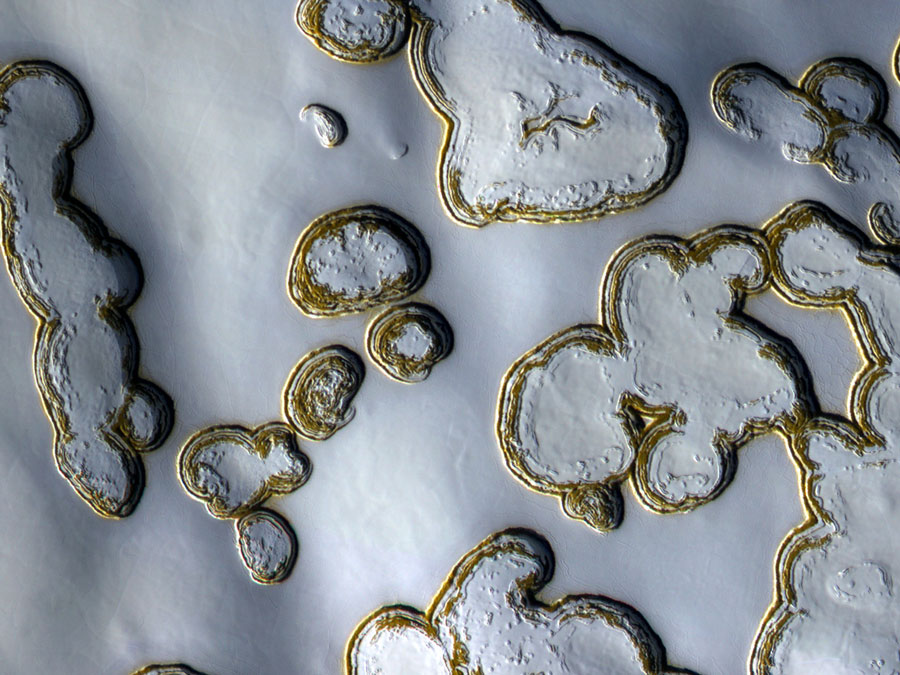
On its journey towards Pluto, the New Horizons spacecraft was able to take beautiful of Jupiter's atmosphere. From this picture, the high speed bands of equatorial clouds are clearly visible in high detail true color where it looks like something out of a Van Gogh painting. The left side of the image is Jupiters south pole. The size of brightness of these bands allow them to be seen with relative ease, even with a small telescope.


